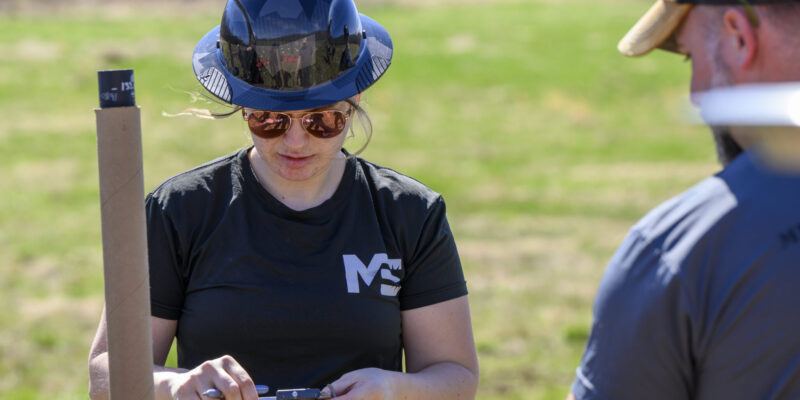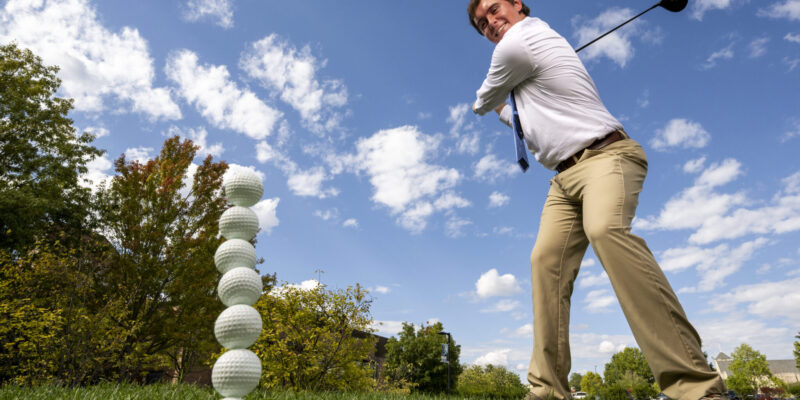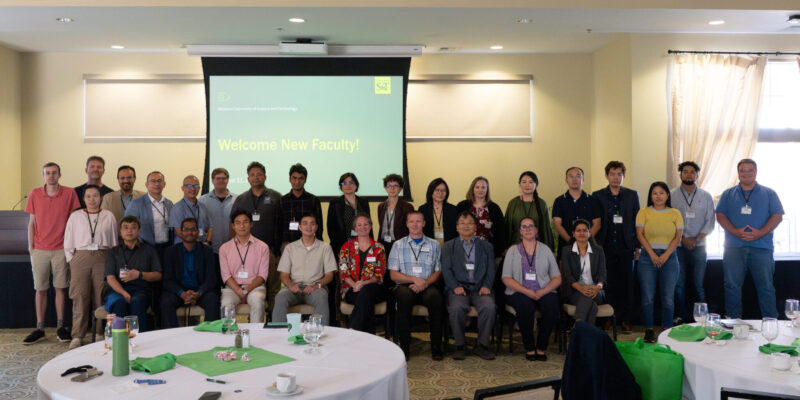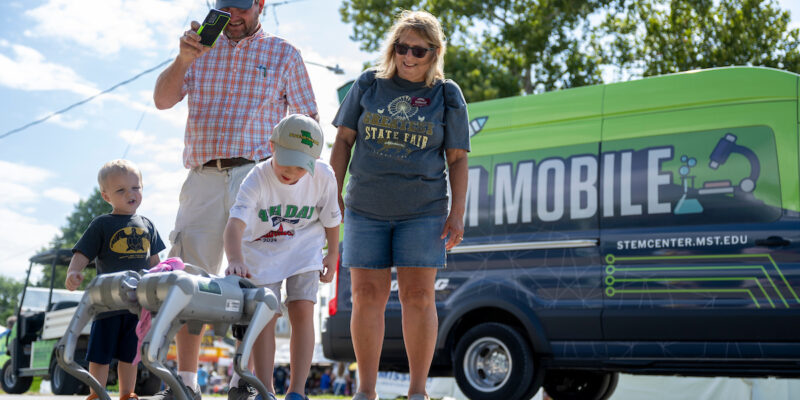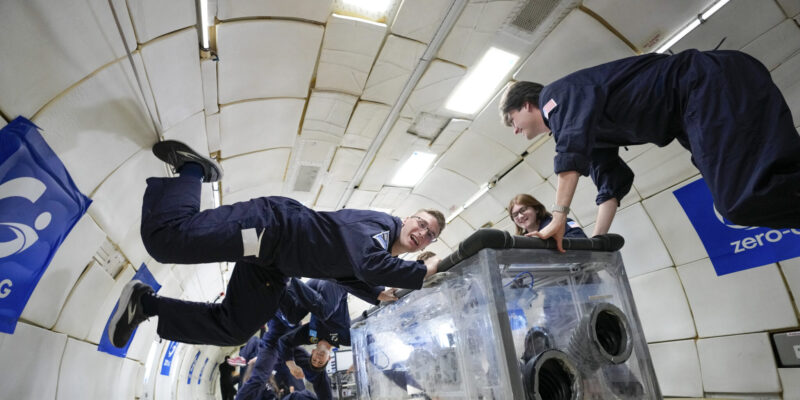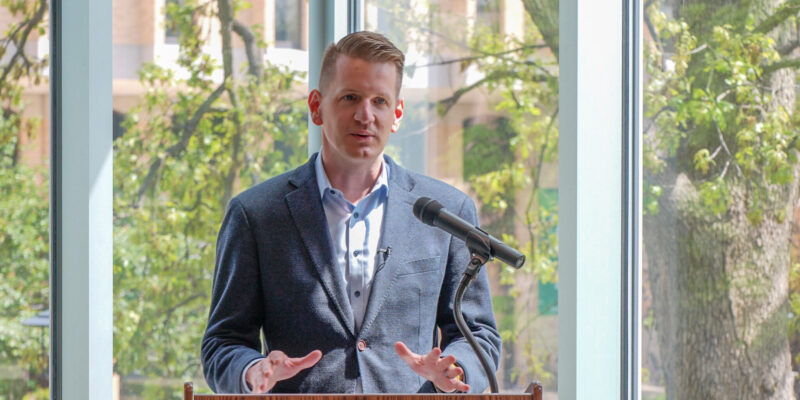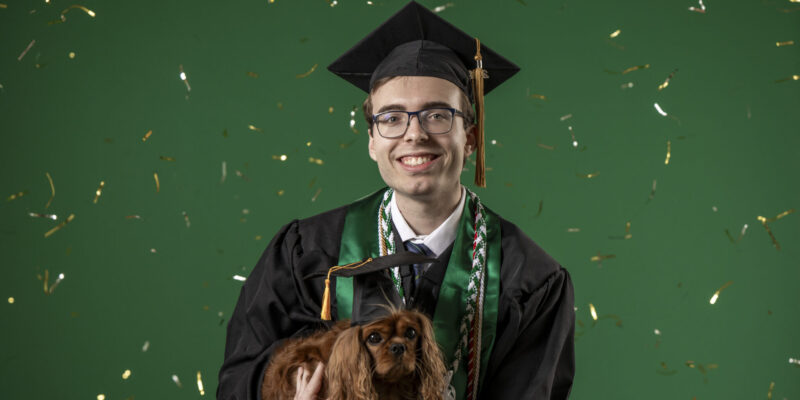Tag: mechanical and aerospace engineering
Retraining the membrane: S&T student’s award-winning research boosts algae growth
Algae — the green, sometimes slimy-looking organisms found in bodies of water — could potentially be used as a commercial product to capture industrial emissions, serve as a biofuel and improve wastewater treatment. But finding a cost-effective way to feed the algae with carbon dioxide so it can grow efficiently at a large enough scale for […]
Read More »S&T student aims for faster ballistics prototyping, lands on world stage
Bullets move fast. Prototyping them? Not so much. But a Ph.D. student in mechanical engineering at Missouri S&T is researching an accelerated process for producing and testing 3D-printed ballistics, and she has already earned international recognition.
Read More »Teeing up for the future: Cole Komyati aims high
For Missouri S&T senior Cole Komyati, “drive” is more than a golf term: it’s a way of life.
Read More »S&T welcomes new faculty
Missouri S&T welcomed over 30 faculty members this year. They bring a wide range of expertise that includes applications for artificial intelligence (AI) in health care, biomedical engineering, concrete sustainability, nuclear reactor safety and semiconductor design. The new faculty are:
Read More »S&T bringing high-tech, hands-on fun to Missouri State Fair
Drones, robots, virtual reality and a world-champion Mars rover built by students. Missouri S&T will bring hands-on activities for fairgoers of all ages to the Missouri State Fair, Aug. 7-17 in Sedalia, Missouri.
Read More »S&T graduate Megan Gegesky explores new territory within long-standing traditions
Megan Gegesky, a second-generation Missouri S&T graduate, is following two paths that don’t normally merge. She’s continuing a family tradition started by her great-great grandfather, and she’s working on what may represent the future of the automotive industry.
Read More »Research flight ‘a giant leap’ for Missouri S&T moon researchers
On a Friday afternoon in May, four Missouri S&T seniors donned flight suits and experienced the moon’s gravity as part of a flight-testing project supported by NASA’s Flight Opportunities program. The next day, they traded their suits for caps and gowns and crossed the stage at S&T’s commencement ceremony, each earning a bachelor’s degree in aerospace engineering.
Read More »Why predicting battery performance is like forecasting traffic − and how researchers are making progress
Lithium-ion batteries are quietly powering large parts of the world, including electric vehicles and smartphones. They have revolutionized how people store and use energy. But as these batteries become more central to daily life, they bring more attention to the challenges of managing them and the energy they store safely, efficiently and intelligently.
Read More »KUKA Robotics president returns to Rolla for lab dedication
When Jack Pennuto first came to Missouri S&T in 2000, he was an aspiring mechanical engineer excited to join the S&T men’s swimming team. When the now 23-time All-American swimmer returned to his alma mater this spring, he came as the president of U.S. operations for KUKA Robotics.
Read More »Engineers Week: Recent S&T grad works for company that developed robotic system for mother’s surgery
A December 2024 graduate of Missouri S&T is putting his knowledge and skills to work for the company behind the robotic system used to perform his mother’s minimally invasive cancer surgery.
Read More »
